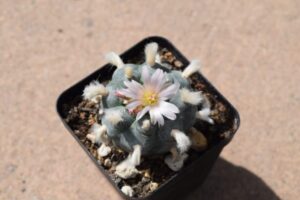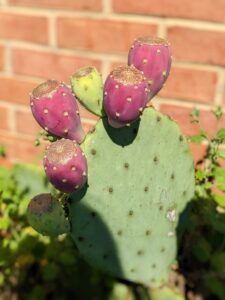While cacti are often admired for their resilient nature and unique aesthetics, there can come a time when you may consider reshaping or reducing the size of your spiky companion. The question arises: can you chop down a cactus? Understanding the implications and techniques involved in this process is essential for the well-being of the plant and the desired aesthetic outcome.
Chopping down a cactus isn’t as simple as wielding a knife or pruning shears. These remarkable plants are adapted to thrive in arid environments, developing intricate physiological mechanisms to appeal to both novice gardeners and seasoned succulent enthusiasts. Thus, before embarking on this botanical endeavor, it’s crucial to navigate the factors that contribute to the cactus’s survival and the eventual beauty of your garden.
First and foremost, one must consider the resplendent beauty that cacti can offer. Their sculptural forms, engaging textures, and vivid blossoms create a mythical allure in garden designs, making them focal points in any landscape. However, this aesthetic appeal is accompanied by a unique set of growing habits and vulnerabilities, leading to the outstanding question of whether cutting down a cactus is a wise decision.
It is essential to ascertain your cactus type and its specific requirements. Different species manifest varied growth patterns; for instance, a Saguaro cactus can grow up to 50 feet tall, whereas smaller varieties like the Echinopsis require far less space. This diversity affects both the practice and consequences of cutting. Understanding your plant’s inherent tendencies will significantly influence your cutting decisions.
Before any adventurous act of pruning, thorough research into how and when to cut your cactus is indispensable. For many varieties, the best time to prune is during the growing season, which typically occurs in spring and early summer. During this time, the cactus is actively engaged in photosynthesis and can more readily heal from cuts and wounds. Cutting during dormancy can lead to unnecessary stress and complications.
Having established the timing, let’s delve into the technicalities of how to effectively chop down a cactus while ensuring its survival. Start by gathering the appropriate tools: a sharp knife or pruning shears, heavy gloves to protect against spikes, and even goggles if you’re dealing with particularly spiny varieties. Moreover, sanitize your tools with rubbing alcohol to prevent the transmission of pathogens that might harm the plant.
When preparing to make your cut, locate the area where you wish to prune. For the best results, cut above a node or a joint, as this encourages new growth. Cacti naturally compartmentalize wounds, forming a protective layer that can help seal off potential infections. Consequently, making an informed cut increases your chance of success and enhances the plant’s vitality.
After cutting, patience becomes your greatest ally. Allow the cut section to callous over for a few days. This crucial step allows the wound to seal, minimizing moisture loss and reducing the risk of rot. Depending on the type of cactus, new growth may emerge rapidly, leading to an transformed shape that can redefine your garden’s composition.
One particularly captivating characteristic of cacti is their ability to propagate through cuttings. Should you desire to take advantage of this botanical marvel, slicing off a healthy segment can lead to the creation of a new plant. After allowing the cut end to callous, simply plant it in well-draining soil and water sparingly. New roots can sprout even in less-than-ideal conditions, exemplifying the cactus’s vigorous resilience.
As you ponder the aesthetic implications of reshaping your cactus, consider the multi-dimensional attributes that these plants possess. Beyond their straight silhouettes and charming spines, many cacti also produce flowers that can take your breath away. A well-timed cut can enhance light penetration and air circulation, promoting a more abundant blooming phase and adding bursts of color to your landscape.
However, be forewarned: improper cutting practices can have adverse effects. If executed without due diligence, you risk compromising the plant’s immune response, leading to fungal infections, rot, or long-term stunted growth. Know when to leave your cactus untouched for optimum health and beauty.
Chopping down a cactus is an art form that requires careful attention to detail and profound respect for the plant’s inherent qualities. This decision goes far beyond mere aesthetics. The impact extends to the overall health and well-being of the cactus, culminating in a more vibrant and resilient addition to your garden.
In conclusion, while you can cut down a cactus, the journey necessitates a well-rounded understanding of the plant’s life cycle, growth patterns, and care requirements. A judicious approach, combined with appropriate techniques, can yield magnificent results. Cacti are not just a decoration; they are living art, a testament to the wonders of nature. Treat them with the care they deserve to appreciate their full potential.





Leave a Comment